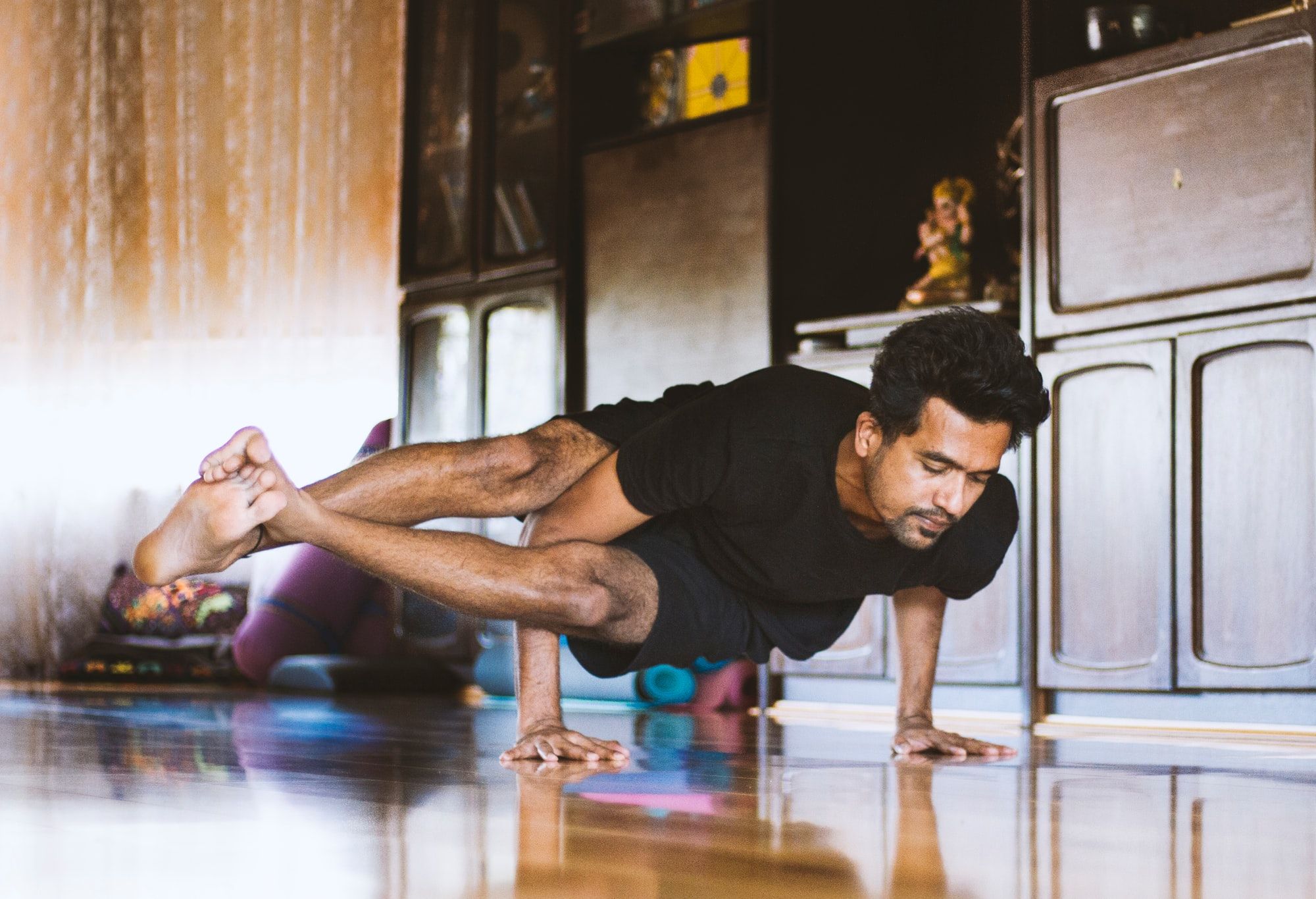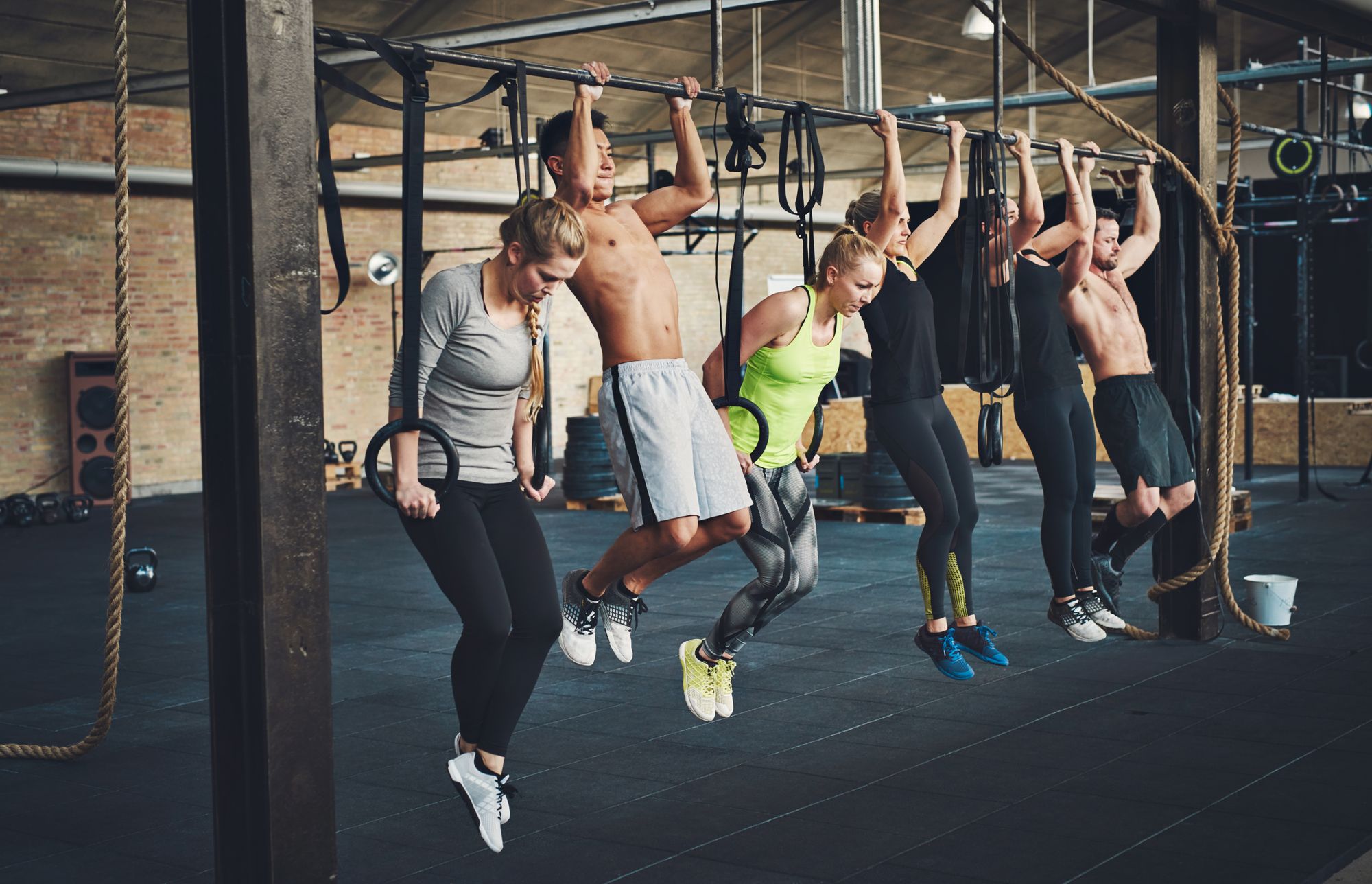The 3 Exercises You’re Doing Wrong At The Gym – And How To Fix Them
We're willing to bet that the following 3 exercises are featured regularly in your workout routine. And for a good reason – they're all fantastic for building muscle! But there's a problem: you may have been doing them wrong the whole time.

We're no psychics, but we're willing to bet that the following 3 exercises are featured regularly in your workout routine. And for a good reason – they're all fantastic for building muscle! But there's a problem: you may have been doing them wrong the whole time. So, if you've ever felt soreness in your lower back after planking, or shoulder tightness after back rows, this article is for you.
Read through the 3 exercises that are most commonly done wrong in the gym and see how you can rectify your mistakes – even if you’re an experienced lifter! By the end of it, you'll (finally) be able to target the muscles you've meant to – instead of straining the others that weren't supposed to come into play!
Planks
Wait – planks? You'd think that with it being a bodyweight exercise, there's be little room for mistakes. It’s on the ground, unlike the pull-up, after all. Well, unfortunately, no.

The traditional plank’s shortcoming
Even though you may feel like you’re doing a ton of core work while you’re staring at your phone – waiting for the clock to run out –during the traditional plank, the reality is far from that.
The traditional plank doesn't activate the core very well. And past the 10-second mark, most people would end up sagging their backs during the movement – resulting in more activation in the shoulders and lower back more than the abs. Fail.
Instead, go with the RKC plank
So, if you genuinely want abs that pop, you shouldn’t depend on the traditional plank. Instead, opt for a variant called the ‘RKC plank.’ According to a 2013 paper, the RKC plank is capable of eliciting ~4 times greater upper and lower abs activation, and 3 times greater obliques activation!

To experience fast-tracked ab gains with the RKC plank, all you need to do is to apply two simple tweaks to the traditional plank:
- Change up the position of your elbows – Instead of placing your elbows directly perpendicular to your shoulder, move them forward such that they’re roughly at the level of your eyes.
- Get into a posterior pelvic tilt position – When you’re in the plank position, force yourself to get into a posterior pelvic tilt position. You can do so by forcefully contracting your glutes and abs – thereby tilting your pelvis upwards.
Once you’ve incorporated these two tweaks to the traditional planks, you’ll realize just how much core activation you’ve missed out on in the past!
Leg Curls
As you probably already know, in comparison to your quads, your hamstrings need more direct work for optimal growth. And what better exercise targets the hamstrings than the lying leg curls, where you’re lying flat on your stomach with your ankles tucked under a padded roller?
Your lower back overcompensates to shorten the range of motion,
You might not realize this, but your body is continually trying to shorten the range of motion of your hamstrings to make the movement easier whenever you get tired. And how does it do this, you ask?
Well, by arching your lower back and raising your butt! This then places a whole lot of pressure of your lower back – explaining the terrible soreness you feel the next day (or worse, when you’re performing the exercise).
Tips on executing leg curls properly
So, to rectify this mistake, you’ll need to be mindful of two things:
- Weights you use – This is one exercise where you’ll need to check your ego. To avoid breaking proper form, choose a weight that challenges you but doesn’t make you go anywhere near failure.
- Keep your back straight during the movement – To avoid overcompensation of your back, be mindful of the positioning of your back throughout the movement. Avoid arching at all times.
If you’re still unable to prevent yourself from arching your back during the exercise, you can also consider exercise alternatives like the glute-ham raise, or the swiss ball leg curl. These exercises can help you work the hamstrings without activating your lower back.
Lateral Raises
Even though lateral raises sound stupidly easy in theory (all you need to do is lift to your sides, right?), many of us still manage to screw the movement up – ending up with creaky, achy joints.
Common lateral raise mistakes
To see if you need to change up the way you perform your lateral raises, read the following 3 commonly-performed mistakes and see if you identify with any of them:
- Raising the weights above shoulder-height – The more you lift your arms, the more you're working your side delts, right? No. Worrying, research shows that past shoulder-height, the majority of the work is taken over by your traps, with a significant risk of shoulder impingement.
- Pointing your thumbs downwards toward the ground – When you raise the weights with your pinkies up (internal rotation), you're putting your shoulders at an increased risk of impingement.
- Lifting the weights directly out to the sides – Yes, it is called the lateral raise, but you really shouldn’t be lifting the weights straight out to your side. This causes unnecessary strain on your elbows and shoulder as a whole.
Proper lateral raise form
Accordingly, you should now know how to fix your lateral raise form:
- Only raise the dumbbells (or cable) to shoulder-height.
- Lean forward very slightly when you’re performing the lateral raises and point your thumbs up to the ceiling (just a little!)
- Lastly, lift the weights roughly 45 degrees (scapular plane) in front of you and incorporate a slight bend in your elbows. This is a much safer and stronger position to lift from.
Alright, that’s all we have for now. Still feeling a little icky about your lifting form in the gym? Well, why not download the GymStreak app? We’ve just updated our exercise library to include a ton of exercises you can refer to when you’re working out. Just use the app’s augmented reality (AR) function, and you’ll see exactly how to do each exercise – ‘right next to you!’
Psst: Need some motivation? Check out our podcast episodes on Wednesdays, where we come to you to give you that fire & motivation to help you get through the rest of the week and finish strong.
References
Kolber, M. J., Cheatham, S. W., Salamh, P. A., & Hanney, W. J. (2014). Characteristics of shoulder impingement in the recreational weight-training population. Journal of Strength and Conditioning Research, 28(4), 1081–1089. https://doi.org/10.1519/JSC.0000000000000250
Pink, M. M., & Tibone, J. E. (2000). The painful shoulder in the swimming athlete. The Orthopedic Clinics of North America, 31(2), 247–261. https://doi.org/10.1016/s0030-5898(05)70145-0
Reinold, M. M., Escamilla, R. F., & Wilk, K. E. (2009). Current concepts in the scientific and clinical rationale behind exercises for glenohumeral and scapulothoracic musculature. The Journal of Orthopaedic and Sports Physical Therapy, 39(2), 105–117. https://doi.org/10.2519/jospt.2009.2835
Schoenfeld, B. J., Contreras, B., Tiryaki-Sonmez, G., Willardson, J. M., & Fontana, F. (2014). An electromyographic comparison of a modified version of the plank with a long lever and posterior tilt versus the traditional plank exercise. Sports Biomechanics, 13(3), 296–306. https://doi.org/10.1080/14763141.2014.942355
Schütz, P., List, R., Zemp, R., Schellenberg, F., Taylor, W. R., & Lorenzetti, S. (2014). Joint angles of the ankle, knee, and hip and loading conditions during split squats. Journal of Applied Biomechanics, 30(3), 373–380. https://doi.org/10.1123/jab.2013-0175


